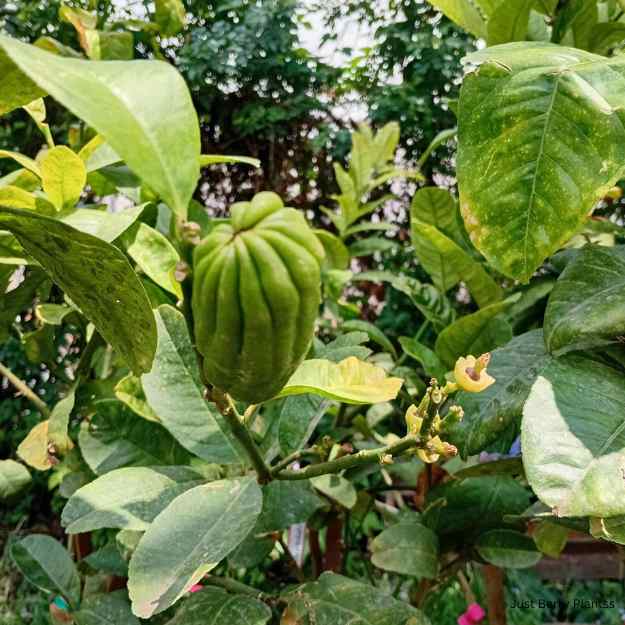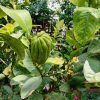Position
Full sun, with at least 6–8 hours of direct sunlight per day. Prefers warm, subtropical to tropical climates; needs to be covered with either frost cover or hothouse plastic in cooler areas over winter.
Soil
Well-drained, loamy, or sandy soil; pH between 5.5–and 7.0. Add a bag of acid compost.
Watering
Moderate watering—allow the topsoil to dry out between waterings. Avoid overwatering.
Mulching
Add a thick layer of pine bark mulch, keeping it about 20 to 30 centimetres away from the tree trunk (any closer may cause excess moisture and damage the trunk). This will retain the moisture in the soil and will prevent weeds from taking over.
Fertilizing
Apply 1 teaspoon of our slow-release nitrogen-rich berry fertiliser every 4-5 months.
Pruning
Light pruning in winter (dormant season) to remove dead wood and shape the tree. Typically grows to 3–4 meters tall, but can be pruned to remain compact for smaller gardens.
Train as an open center (vase shape) for good light penetration and air circulation.
Pests and Diseases
Aphids, citrus psylla, red scale, citrus greening. Spraying regularly with Agricultural Neem Oil or Effective Microorganisms (EM Control ) will assist in either prevention or after the fact. If you already have aphids or mites, wash the tree with a harsh hosing, and when dry, spray with Neem oil or EM Control.
Practice good garden hygiene (remove fallen fruit and leaves).
Watch for root rot (if overwatered) and fungal infections during wet periods.
Harvesting
Ripens from autumn to winter; the shape varies but usually resembles a cluster of “fingers.” The rind is thick, yellow, and highly aromatic.




